An introductory machine or VA is a circuit breaker for supplying electricity to the "end consumer", provided that there is a short circuit or an overload in the circuit. With the exception of the input automaton, fuses, a circuit breaker or a packet switch can also be installed on the floor switchboard, but in comparison with them, it is characterized by a large value of the rated current.
- Types of ratings of circuit breakers
- Single pole
- Bipolar
- Three-pole
- Basic concepts of circuit breaker rated breaking currents
- Calculation of machine denominations
- Criterias of choice
- The principle of the device of intra-apartment wiring
- Total power of electrical appliances
- The choice of the cross-section of the conductors
Types of ratings of circuit breakers
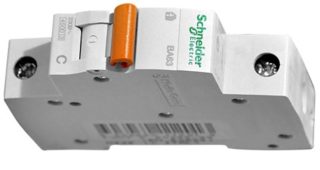
The full name of the device is an introductory circuit breaker. Before setting the ratings of machines, it is important to learn about the features of their work. Due to its proximity to the overhead line, the equipment must have an increased switching resistance, which is characterized by the smooth and quick operation of the device in the event of emergency situations. All indicators are recorded on the equipment labeling.
The supply of electricity to an apartment depends on the electrical network layout and its needs. Based on the characteristic features, it is necessary to select suitable ratings for current machines.
Single pole
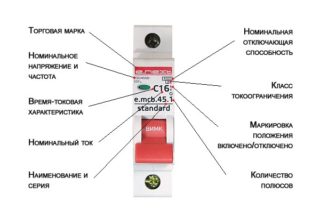
This type is used in a single-phase electrical network. The device is connected to the power supply through the upper terminal, and the lower terminal connects it to the outgoing wire.
Mount it in the place where the phase wire breaks. In case of an emergency, it disconnects the cable from the power supply. The principle of operation is similar to automatic machines that are installed on the outgoing lines, only the rated current is higher (40 A).
The input machine installed in front of the electric meter must be sealed. The cable entry into the apartment also protects the VA from overheating.
Bipolar
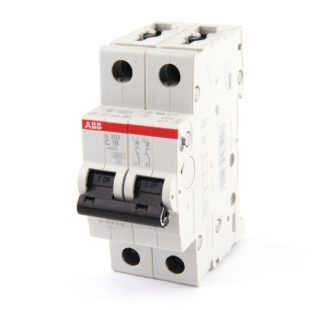
The two-pole device is somewhat different from its predecessor and consists of a block with two poles. They are equipped with one combined lever that is capable of blocking all shut-off mechanisms. This feature is extremely important in operation, since it is unacceptable to expose the neutral wire to a break.
You cannot install two single-pole devices instead of one two-pole. The desired result will still not be achieved, and in emergency situations, the likelihood increases that all household appliances will fail.
It is mounted with a single-phase input, this is due to the specific scheme for connecting electricity in old-style houses. A branch is made from the riser of the electrical panel at the entrance to the apartment using a single-phase two-wire line.
To provide a 100% guarantee of shutdown, the apartment panel is de-energized using a two-pole device. In addition, quite often it is necessary to change the packet switch in the entrance flap.
Another important reason for installing a two-pole introductory machine is to replace plugs. On the old shields, there are still plugs that are installed at zero and phase. The connection diagram remains the same.
Three-pole
A device for a three-phase network is used to ensure the simultaneous de-energization of all phases in the event of a short circuit or overload of the internal electrical network.
Basic concepts of circuit breaker rated breaking currents
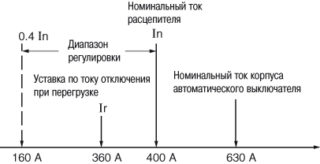
The rated current is the maximum current carrying capacity to which the thermal release cannot react. They select it, relying on the listed selection criteria:
- Peak (maximum permissible) load on the line or the estimated total power of the network when a large number of household appliances and other electrical appliances are operating at the same time.
- Cross-sectional area of the cable - the cross-sectional area, which is sufficient in order to pass a certain load through itself and at the same time not overheat.
It is always worth paying attention to the cable cross-section indicators more closely, since it is strictly forbidden to put protection more than the cable can safely pass through itself. If this feature is neglected, the cable will become very hot, which can lead to an emergency.
Calculation of machine denominations
Based on the fact that the cable cross-section and the maximum load are closely interconnected with each other, knowing at least one parameter, you can easily calculate the rest. For convenience, it is recommended to use the selection table for connection and power.
| Rated current | Conductor cross section | Voltage | |
| 380 V | 220 V | ||
| 1 A | 0.5 mm sq. | — | 2.4 kW |
| 15 A | 0.75 mm2 | — | 3.3 kW |
| 17 A | 1 mm sq. | 11 kWt | 3.7 kW |
| 23 A | 1.5 mm sq. | 15 kWt | 5 kW |
| 30 A | 2.5 mm sq. | 19 kWt | 6.6 kW |
| 41 A | 4 mm sq. | 26 kWt | 9 kWt |
Criterias of choice
Each electrical network, intra-house or intra-apartment, is individual and has its own characteristics. There are no standard solutions for the installation of circuit breakers. When choosing a device, it is important to take into account all selection criteria, otherwise an emergency situation may be created.
The principle of the device of intra-apartment wiring
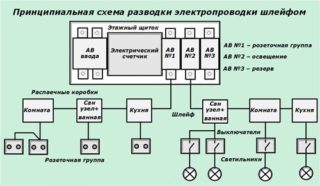
Internal electrical cables have a branched structure called a cycle-free graph. Thanks to this construction principle, it is possible to equip all types of circuits with protective functions.
This approach made it possible to increase the stability of the entire system when creating an emergency, and also simplifies the process of eliminating a breakdown. The load is also evenly distributed.
Total power of electrical appliances
The maximum possible and permissible load on the circuit is observed when all electrical devices in the apartment are turned on simultaneously. To calculate this indicator, it is enough to simply sum up the total electricity consumed per unit of time.
There are lines for which the simultaneous operation of all devices is not possible. Sometimes houses are specially equipped with systems that block the operation of powerful devices.
The choice of the cross-section of the conductors
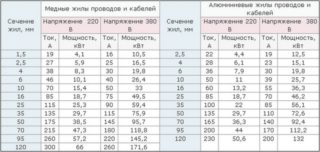
Before installing the power cable from the switchboard, it is imperative to calculate the power of all electrical appliances. The cross-sectional area of any branch is selected according to the calculation table, taking into account the material of manufacture of the wiring, for example, copper and aluminum.
Manufacturers of electrical cables attach the most detailed reference materials to their products. If, for some reason, there is no information, you need to refer to the data from the reference book entitled "Rules for Electrical Equipment".
Sometimes consumers, in order to protect themselves, choose not the minimum allowable cross-sectional area, but with a small margin. This can be justified for the following reasons:
- The start of operation of electrical appliances with powerful electric motors, which gives strong starting currents. This process is accompanied by a strong voltage drop, which can lead to serious damage to the electronics of washing machines, air conditioners, etc. The thicker the conductive cable, the less voltage surges will be.
- Long-term operation of a thick cable, which is periodically subjected to maximum permissible loads.Re-laying the wiring in the apartment is a troublesome business, especially if high-quality repairs have already been made in the rooms.
- Large throughput allows connecting new electrical devices to the branches of the network. For example, an electric oven or freezer can be installed in the kitchen.
The ratings of the current circuit breakers, subject to all the rules of installation, maintenance and operation, significantly extend the service life of household appliances and other electrical appliances.








